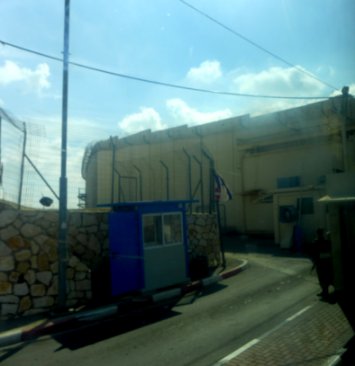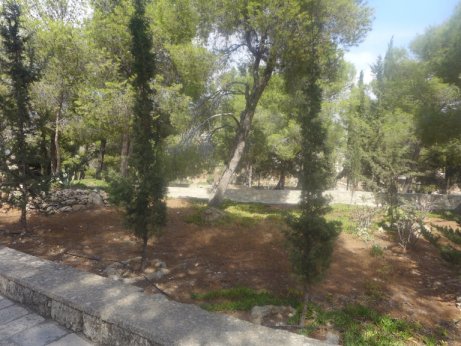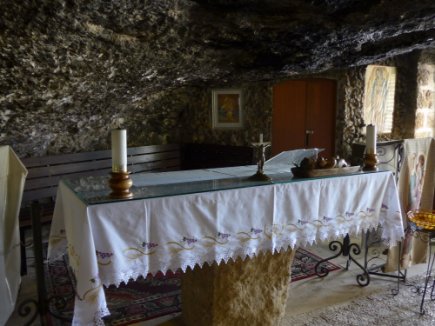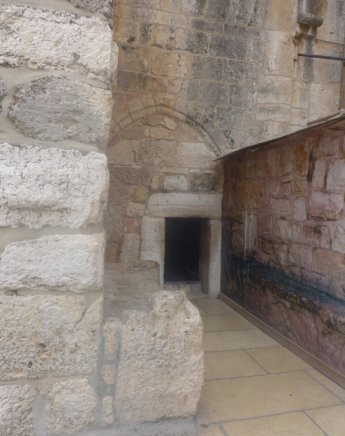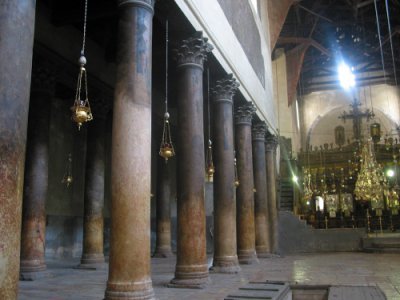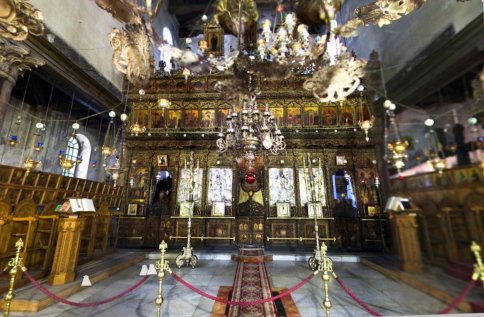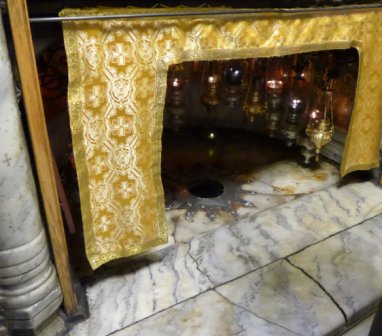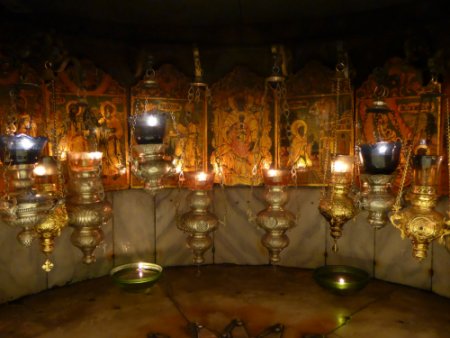|
Bethlehem |
|
| Of all the names
in the holy Land, this has to be the most resonant, conjuring up all
those childhood images of nativity plays and carol singing. but would
reality measure up? Bethlehem is in the Palestinian controlled West Bank, and our tour party had to pass through the Israeli West Bank Barrier to reach it. Straightforward enough, we were nodded through, but then we were a party of tourists, likely to spend money, not a hard-pressed local struggling to get to work. |
|
|
|
|
| First stop - the Shepherds' field, near the town of Beit Sahour. Traditionally this is the site where the shepherds heard the news of the birth of Christ from the angels. It consists of a garden, a grotto where shepherds sheltered with their sheep, now a chapel, and a modern church dating from 1954. The site is run by Franciscans, as are many places in the Holy Land. | |
|
|
|
|
|
|
Inevitably, I suppose, there is another Shepherds' field a third of a mile away - the site claimed by the Eastern Orthodox church. This isn't, however, just a cynical modern ploy to cash in on the tourist trade. Both sites are very ancient, with archaeological evidence of monastic buildings dating back to the fourth century. On to Bethlehem itself and the Church of the Nativity. Disappointingly, major restoration is going on and the interior is filled with scaffolding. I'm posting here some older pictures of the nave borrowed from elsewhere. The Grotto of the Nativity was as it should be, though slightly alarming. Access was down uneven steps crowded with visitors. The grotto itself was full, exit was by a narrow staircase, and all around were burning candles and hanging textiles. It was something of a relief once we were out. |
|
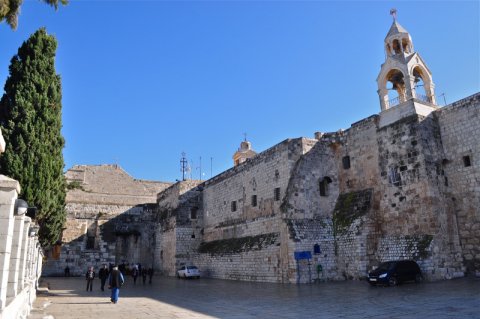 |
|
|
|
|
|
|
|
The disappointment about the the state of the Nativity Church was more than made up for by a visit to the nearby Milk Grotto. A host of legends are attached to this place, revered from the fourth century. Traditionally, Joseph and the Virgin Mary sheltered here during the Slaughter of the Innocents. A drop of her milk fell to the ground, which turned the stone to white. The grotto has been - and still is - a pilgrimage site for couples hoping to conceive a child. |
|
|
|
|
| So: thoughts on
Bethlehem in retrospect. Inevitably, the arguments over the validity of
the Nativity story have to be addressed. Was Christ
born in Bethlehem, or was this a literary spin by the authors of the
gospels of Luke and Matthew to associate Him with the house of David?
Theologians such as Geza Vermes and Bart Ehrman say he wasn't. Certainly
Luke's account, one of the most magical of all stories, sadly falls
apart when subjected to rigorous historical analysis. Matthew is more believable:
Mary and Joseph were residents of Bethlehem, and moved to Nazareth on
their return from Egypt to avoid the dangerous political situation in
Bethlehem. Whatever the historical truth, the city has been the destination for pilgrims for over 1600 years, one of the earliest being St Jerome. All that devotion has given the location its own potency. One final story.The day after our visit, the all-to-familiar violence broke out between Israelis and Palestinians. The following day, the border crossing was slammed shut, and rioting broke out in Bethlehem. Should any present day Palestinian family set out on a Flight to Egypt, they wouldn't get very far. |
|
| Holy Land page 1 | |
